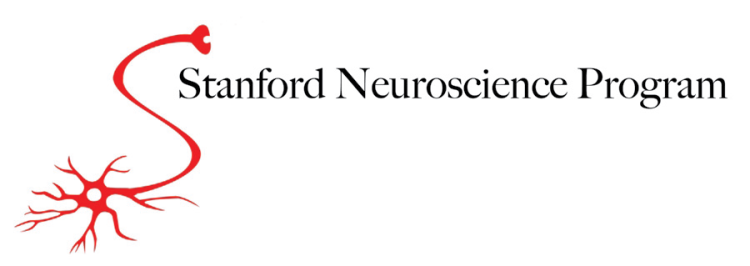Ph.D's in Press (January-February 2013)
/Part 4 in an occasional feature, highlighting recently published articles featuring an author (or authors) who is a current member of the Stanford Neuroscience Ph.D program. (Part 1, Part 2, Part 3)* Starting 2013 on a strong note, we have two papers with first authors from the Stanford Neuro PhD community. First, Logan Grosenick (Suppes and Deisseroth labs) presents new variants of the GraphNet fMRI analysis method. Second, Jordan Nechvatal (Lyons lab) reviews brain imaging studies on the effect of stress exposure therapy for anxiety disorders (including phobias and PTSD).
Logan Grosenick
Grosenick, Klingenberg, Katovich, Knutson and Taylor. Interpretable whole-brain prediction analysis with GraphNet. Neuroimage, 2013 Jan 5. pii: S1053-8119(12)01248-7. doi: 10.1016/j.neuroimage.2012.12.062. [Epub ahead of print]. (Link)
Abstract: Multivariate machine learning methods are increasingly used to analyze neuroimaging data, often replacing more traditional "mass univariate" techniques that fit data one voxel at a time. In the functional magnetic resonance imaging (fMRI) literature, this has led to broad application of "off-the-shelf" classification and regression methods. These generic approaches allow investigators to use ready-made algorithms to accurately decode perceptual, cognitive, or behavioral states from distributed patterns of neural activity. However, when applied to correlated whole-brain fMRI data these methods suffer from coefficient instability, are sensitive to outliers, and yield dense solutions that are hard to interpret without arbitrary thresholding. Here, we develop variants of the Graph-constrained Elastic Net (GraphNet), a fast, whole-brain regression and classification method developed for spatially and temporally correlated data that automatically yields interpretable coefficient maps (Grosenick et al., 2009b). GraphNet methods yield sparse but structured solutions by combining structured graph constraints (based on knowledge about coefficient smoothness or connectivity) with a global sparsity-inducing prior that automatically selects important variables. Because GraphNet methods can efficiently fit regression or classification models to whole-brain, multiple time-point data sets and enhance classification accuracy relative to volume-of-interest (VOI) approaches, they eliminate the need for inherently biased VOI analyses and allow whole-brain fitting without the multiple comparison problems that plague mass univariate and roaming VOI ("searchlight") methods. As fMRI data are unlikely to be normally distributed, we (1) extend GraphNet to include robust loss functions that confer insensitivity to outliers, (2) equip them with "adaptive" penalties that asymptotically guarantee correct variable selection, and (3) develop a novel sparse structured Support Vector GraphNet classifier (SVGN). When applied to previously published data (Knutson et al., 2007), these efficient whole-brain methods significantly improved classification accuracy over previously reported VOI-based analyses on the same data (Grosenick et al., 2008; Knutson et al., 2007) while discovering task-related regions not documented in the original VOI approach. Critically, GraphNet estimates fit to the Knutson et al. (2007) data generalize well to out-of-sample data collected more than three years later on the same task but with different subjects and stimuli (Karmarkar et al., submitted for publication). By enabling robust and efficient selection of important voxels from whole-brain data taken over multiple time points (>100,000 "features"), these methods enable data-driven selection of brain areas that accurately predict single-trial behavior within and across individuals.
Jordan Nechvatal
Nechvatal and Lyons. Coping changes the brain. Front. Behav. Neurosci., 22 February 2013 | doi: 10.3389/fnbeh.2013.00013. (Link)
Abstract: One of the earliest and most consistent findings in behavioral neuroscience research is that learning changes the brain. Here we consider how learning as an aspect of coping in the context of stress exposure induces neuroadaptations that enhance emotion regulation and resilience. A systematic review of the literature identified 15 brain imaging studies in which humans with specific phobias or post-traumatic stress disorder (PTSD) were randomized to stress exposure therapies that diminished subsequent indications of anxiety. Most of these studies focused on functional changes in the amygdala and anterior corticolimbic brain circuits that control cognitive, motivational, and emotional aspects of physiology and behavior. Corresponding structural brain changes and the timing, frequency, and duration of stress exposure required to modify brain functions remain to be elucidated in future research. These studies will advance our understanding of coping as a learning process and provide mechanistic insights for the development of new interventions that promote stress coping skills.
*Regarding the mechanics of this feature: This is purely through the magic of an ongoing My NCBI search for the names of Neuro PhD students. I wouldn't be surprised if there were some false negatives in the data set. Neuro students - let me know if I've missed your paper, and I'll gladly add it.

